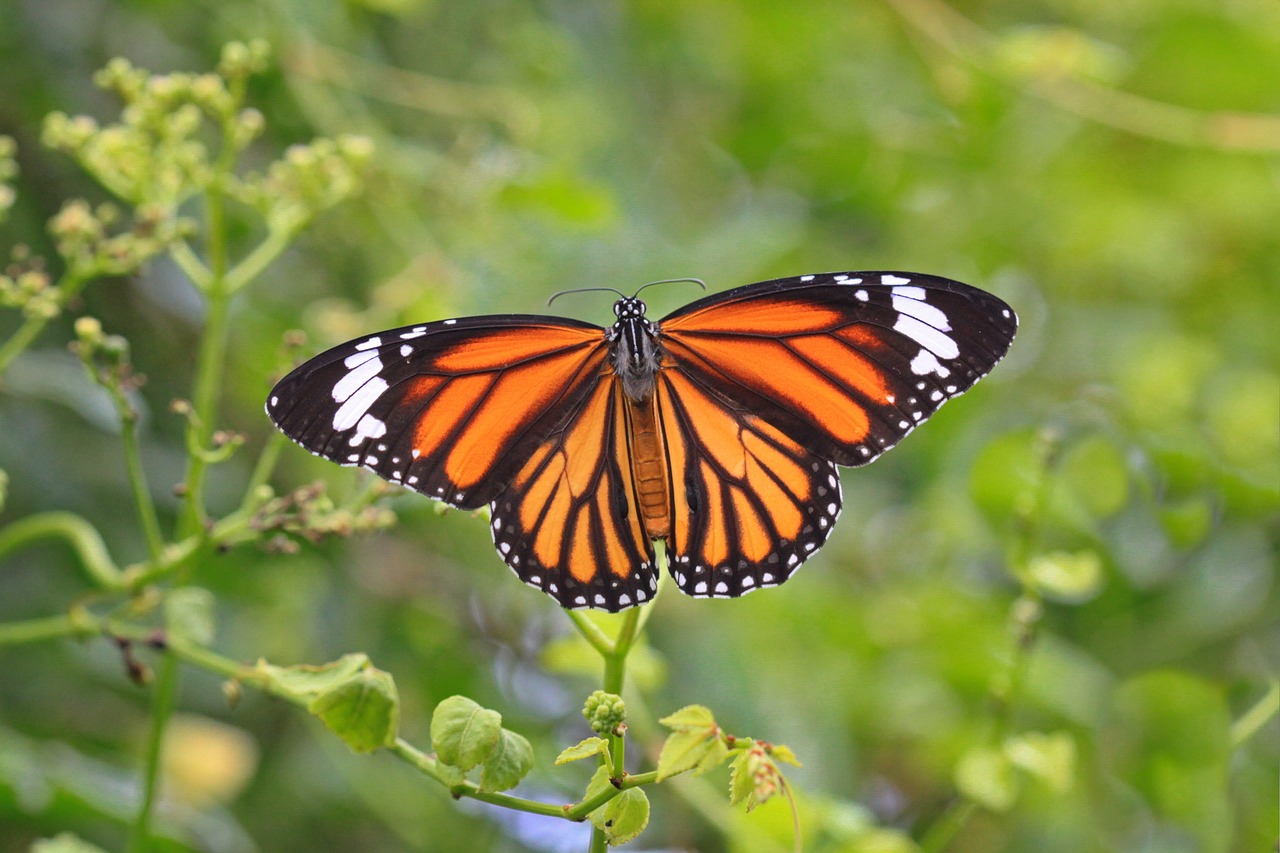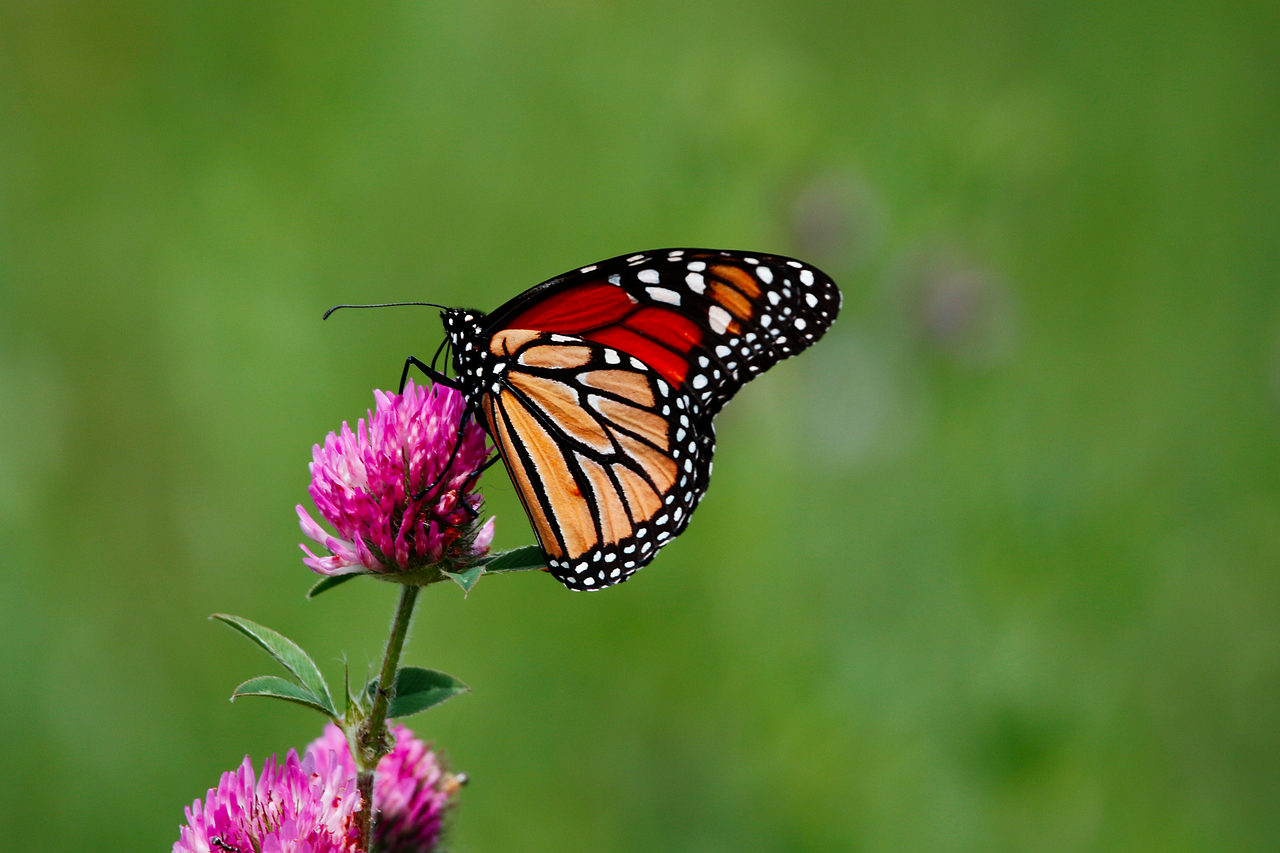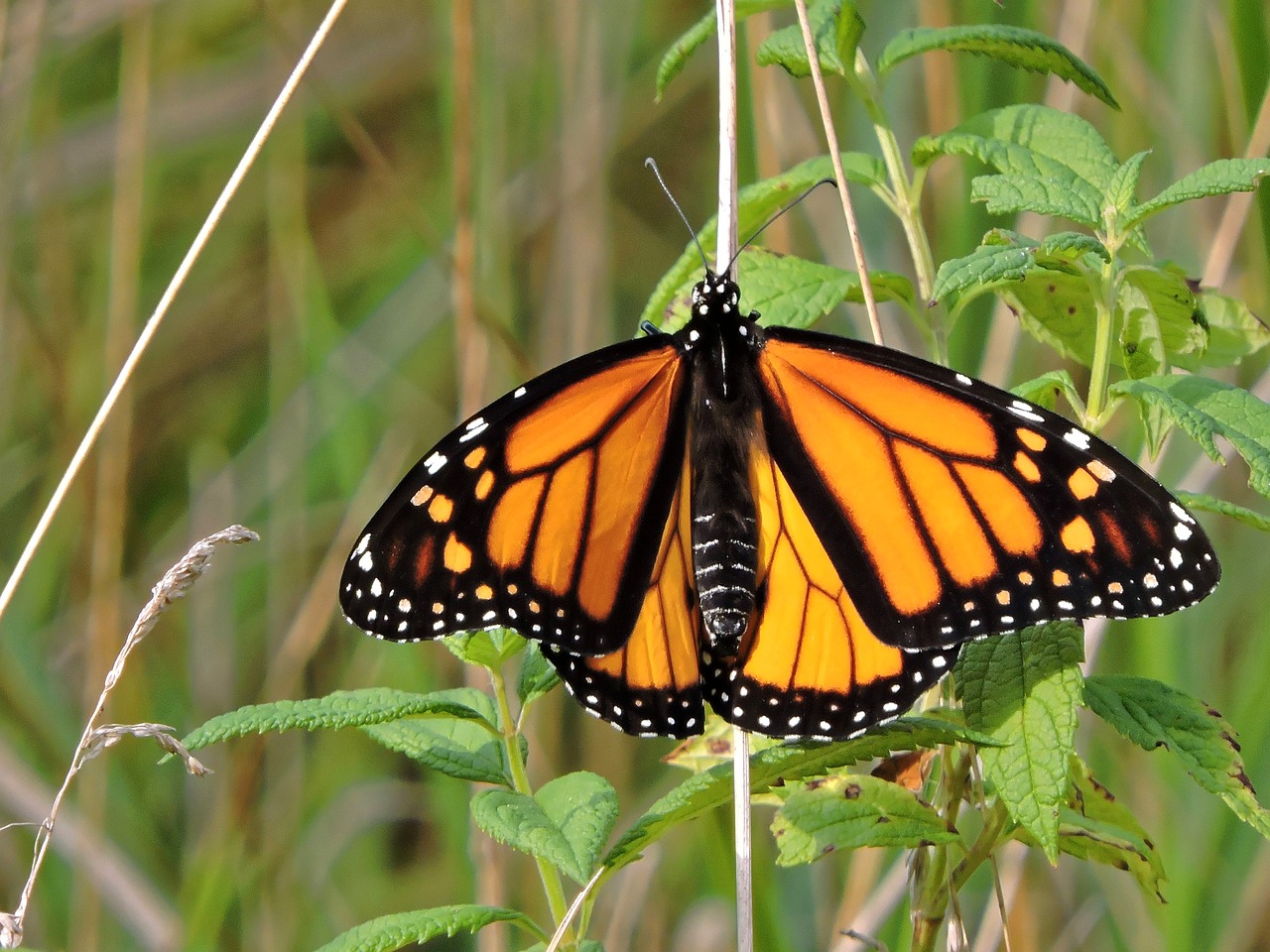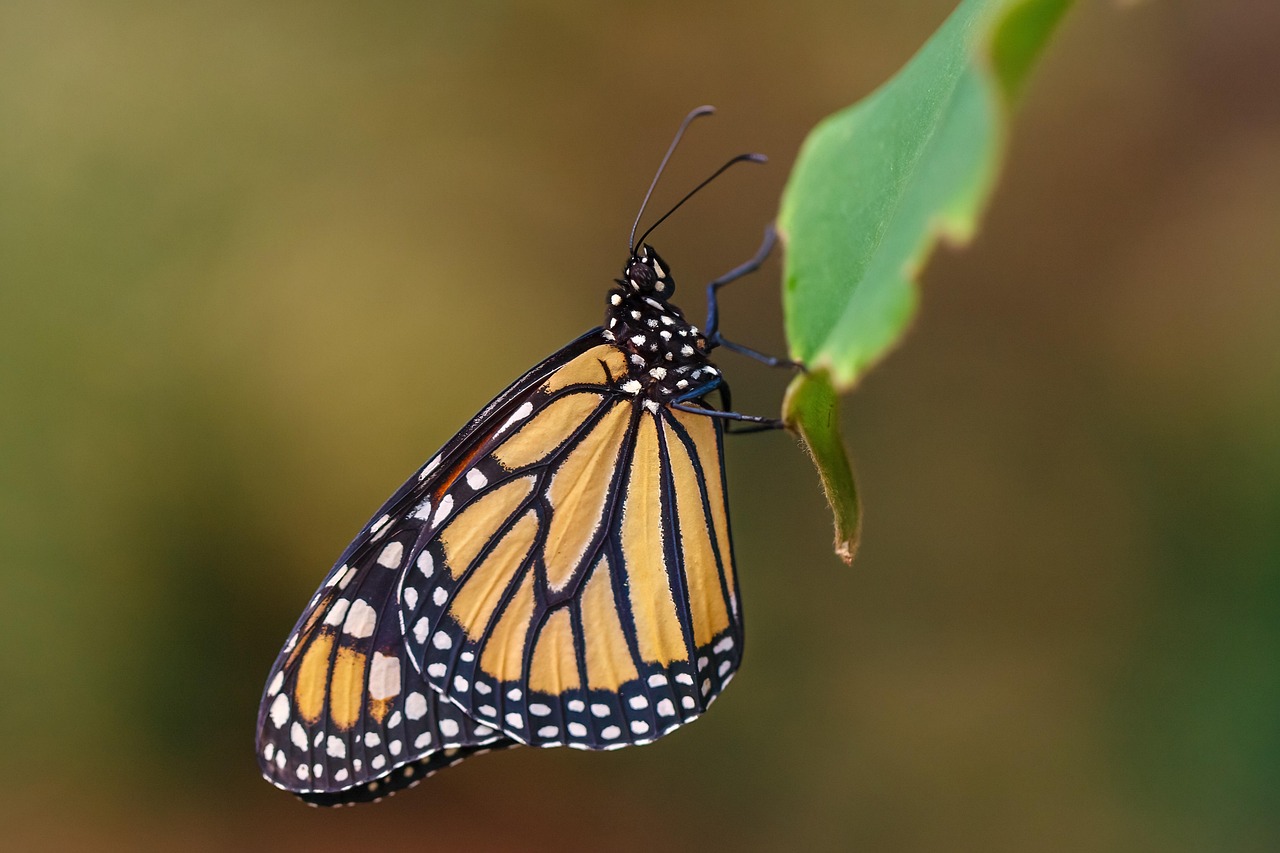To safely handle monarch butterflies, approach them gently and calmly. Use clean, dry hands to avoid damaging their delicate wings. Always allow the butterfly to walk onto your hand or a surface rather than trying to grab it. This minimizes stress and ensures a more positive interaction.
Understanding Monarch Butterflies

Monarch butterflies are not only beautiful creatures but also vital to our ecosystems. They are known for their incredible migration journey, spanning thousands of miles from North America to central Mexico. During this journey, they face numerous challenges, making it essential to treat these butterflies with care.
These striking insects are easily recognizable by their orange and black wings. Monarchs undergo a fascinating life cycle that includes four stages: egg, larva (caterpillar), pupa (chrysalis), and adult butterfly. Each stage plays a crucial role in their survival and development.
The Importance of Monarch Butterflies
Monarch butterflies are not just pretty to look at; they have significant ecological roles. They contribute to the pollination of various plants, helping to maintain biodiversity. This process is vital for the health of our ecosystems and agriculture.
Additionally, monarchs serve as indicators of environmental health. Their population levels can reflect changes in habitat quality and climate conditions. As such, preserving their populations is essential for ecological balance.
Key Facts About Monarch Butterflies
| Fact | Description |
|---|---|
| Migration Distance | Monarchs can travel up to 3,000 miles during their migration. |
| Lifespan | Adult monarchs can live from a few weeks up to several months depending on the time of year. |
| Diet | Caterpillars feed primarily on milkweed, while adults drink nectar from flowers. |
| Conservation Status | Monarch populations have declined significantly due to habitat loss and climate change. |
Handling monarch butterflies requires an understanding of their physiology. Their wings are covered with tiny scales that can be easily damaged. This is why gentle handling is paramount. Stress can lead to disorientation or even death in these fragile creatures.
Basic Guidelines for Handling Monarch Butterflies
- Always wash your hands before handling a butterfly to remove any oils or residues.
- Approach the butterfly slowly to avoid startling it.
- Allow the butterfly to crawl onto your hand rather than picking it up forcefully.
- Limit handling time to reduce stress on the butterfly.
- Observe the butterfly’s behavior for signs of distress.
By following these guidelines, you can ensure a safe and enjoyable experience for both you and the monarch butterfly. Understanding their needs and behaviors will enhance your interactions and contribute positively to their conservation.
Creating a Butterfly-Friendly Environment
To safely handle monarch butterflies, it is essential to create an environment that encourages their presence and well-being. Providing a habitat where they can thrive will not only enhance your chances of observing them but also contribute to their conservation. Here are some key elements to consider when setting up a butterfly-friendly space.
Native Plants
Planting native flora is crucial for attracting monarchs. Milkweed is the primary host plant for monarch caterpillars, while adult butterflies are attracted to nectar-rich flowers. By incorporating a variety of native plants, you can create a biodiverse environment that supports all life stages of the monarch butterfly.
- Milkweed species: Common Milkweed, Swamp Milkweed, and Butterfly Weed.
- Nectar plants: Coneflower, Black-eyed Susan, and Lantana.
Choosing plants that bloom at different times throughout the growing season ensures that food sources are available for butterflies from spring to fall. This diversity helps sustain their populations and enhances your garden’s beauty.
Water Sources
Butterflies also require water for hydration. A shallow dish filled with clean water can serve as a drinking spot. You can add small stones or pebbles to provide landing areas. This setup will attract butterflies while preventing them from drowning.
Sunlight and Shelter
Monarch butterflies thrive in sunny locations, as they rely on sunlight to warm their bodies. Choose a garden spot that receives ample sunlight throughout the day. However, it’s equally important to provide shelter from harsh weather conditions. Planting shrubs and tall grasses can help create protective areas where butterflies can rest or seek refuge from wind and rain.
Monitoring Butterfly Health
Keeping an eye on the health of monarch butterflies in your area is essential for understanding their needs and challenges. Regular observation can help you identify any issues that may arise.
Signs of Healthy Butterflies
A healthy monarch butterfly typically displays vibrant colors and active behavior. Here are some indicators of a healthy butterfly:
- Bright, intact wings without tears or discoloration.
- Active movement and fluttering.
- Feeding on nectar or resting with open wings.
Common Threats to Monarch Butterflies
Several factors pose threats to monarch populations. Awareness of these threats can help you take action to protect them:
- Pesticides: Chemical treatments can harm butterflies at all life stages. Opt for organic gardening methods whenever possible.
- Habitat Loss: Urban development and agricultural practices have significantly reduced available habitats for monarchs.
- Climate Change: Changes in temperature and weather patterns can affect migration routes and breeding cycles.
By monitoring these factors and advocating for sustainable practices, you can contribute to the conservation of monarch butterflies and other pollinators in your area.
Engaging with Monarch Butterflies
Interacting with monarch butterflies can be a rewarding experience. Observing their behavior and understanding their lifecycle enhances your appreciation for these amazing insects. Here are some ways to engage with them safely:
- Photography: Capture their beauty without touching them. This allows you to document their presence without causing stress.
- Citizen Science: Participate in local or national butterfly counts. This helps researchers track population trends and health.
- Educational Workshops: Attend workshops on butterfly conservation to learn more about their needs and challenges.
Engaging with monarch butterflies not only enriches your knowledge but also fosters a deeper connection with nature, encouraging stewardship and conservation efforts in your community.

Understanding the Monarch Butterfly Lifecycle
To safely handle monarch butterflies, it is important to understand their lifecycle. This knowledge not only enhances your appreciation for these insects but also informs how to best interact with them during each stage of their development. The lifecycle consists of four distinct stages: egg, larva, pupa, and adult.
1. Egg Stage
The lifecycle begins when a female monarch lays eggs on the underside of milkweed leaves. Each egg is tiny and usually white or pale green, resembling a droplet. This stage lasts approximately three to ten days, depending on environmental conditions such as temperature and humidity.
2. Larva (Caterpillar) Stage
Once the eggs hatch, the caterpillars emerge. This stage is characterized by rapid growth, requiring the caterpillars to consume large quantities of milkweed. They often go through five molts, shedding their skin as they grow. This stage lasts about two weeks.
- Feeding: Caterpillars primarily eat milkweed, which provides them with toxins that make them distasteful to predators.
- Appearance: Caterpillars are striped with black, yellow, and white bands, making them easily recognizable.
3. Pupa (Chrysalis) Stage
After reaching full size, the caterpillar forms a chrysalis. This transformation stage can last from 10 days to two weeks. Inside the chrysalis, the caterpillar undergoes metamorphosis, reorganizing into its adult form. The chrysalis is often green with gold accents and can be found hanging from branches or leaves.
4. Adult Butterfly Stage
When the metamorphosis is complete, the chrysalis splits open, and the adult butterfly emerges. Initially, its wings are crumpled and wet. The butterfly must pump fluid into its wings to expand them fully. This stage lasts about two to six weeks for summer butterflies and can extend for months for those that will migrate.
Tips for Observing Each Lifecycle Stage
Knowing how to responsibly observe each lifecycle stage enhances your experience while ensuring the safety of the butterflies.
Observing Eggs
- Look for clusters of tiny eggs on the underside of milkweed leaves.
- Avoid touching or moving the leaves to prevent disturbing the eggs.
Observing Caterpillars
- Watch for feeding patterns on milkweed plants.
- Take care not to remove caterpillars from their food source; they rely on milkweed for survival.
Observing Chrysalises
- Be cautious around chrysalises; avoid touching them as this can cause harm.
- Observe from a distance to minimize stress on the developing butterfly.
Observing Adult Butterflies
- Create a butterfly-friendly garden to attract adults and provide ample feeding opportunities.
- Watch their behaviors such as feeding, sunbathing, and courtship without disturbing them.
The Importance of Timing in Handling Monarchs
Timing is crucial when interacting with monarch butterflies. Understanding their seasonal patterns and behavior can enhance your experience while ensuring their safety.
Migration Season
Monarchs migrate south in the fall and north in the spring. During migration, they are less likely to feed and more focused on reaching their destinations. Therefore, it’s best to avoid handling them during this critical travel period.
Breeding Season
The breeding season occurs in late spring and summer. At this time, females are actively searching for milkweed to lay eggs. It is essential to provide a suitable environment but limit handling during this stage to prevent stress on breeding adults.
Wintering Period
Monarchs hibernate in clusters in specific locations during winter. These areas should be left undisturbed to ensure their survival until spring. Observing them in their wintering sites should be done with great caution and respect.
By understanding monarch butterflies’ lifecycle and behaviors, you can foster a deeper connection and engagement while ensuring a safe environment for these magnificent creatures.
Handling Monarch Butterflies with Care
As you engage with monarch butterflies, remember that they are delicate creatures deserving of respect and care. Each interaction should be mindful of their needs and well-being. It is vital to reinforce the importance of gentle handling techniques and the impact of human actions on their survival.
When you decide to handle a monarch butterfly, ensure the setting is calm and quiet. Avoid loud noises or sudden movements that might startle them. Remember, these butterflies are not just beautiful insects; they are essential pollinators and a critical part of our ecosystem.
Educating Others About Monarch Butterflies
Sharing your knowledge about monarch butterflies is an important step in their conservation. Educating friends, family, and community members can foster a collective effort to protect these remarkable insects. Here are some ways to spread awareness:
- Host Workshops: Organize local workshops or presentations to teach others about monarch lifecycle, habitat needs, and safe handling practices.
- Create Educational Materials: Develop brochures or flyers that highlight key information about monarch butterflies and how to protect them.
- Engage on Social Media: Use social media platforms to share photos, facts, and conservation tips related to monarchs.
Participating in Conservation Efforts
Joining conservation initiatives can significantly impact monarch populations. Many organizations focus on habitat restoration, research, and public education. Here are some steps you can take:
- Join Local Conservation Groups: Participate in groups dedicated to butterfly conservation efforts in your community.
- Volunteer for Habitat Restoration: Engage in activities that restore natural habitats for monarchs, such as planting native species and removing invasive plants.
- Support Research Projects: Contribute to citizen science projects that track butterfly populations and migration patterns.
Final Thoughts


In conclusion, safely handling monarch butterflies requires a blend of knowledge, patience, and respect. Understanding their lifecycle and behavior is essential in ensuring positive interactions while minimizing stress on these fragile creatures. By creating butterfly-friendly environments and engaging in conservation efforts, you contribute to the survival of monarchs and the health of our ecosystems.
As you observe and interact with these beautiful insects, remember that each small action counts. Whether it’s planting milkweed in your garden or simply spreading awareness about their plight, every effort contributes to creating a sustainable future for monarch butterflies. Together, we can foster a deeper appreciation for nature and ensure that these magnificent creatures continue to grace our landscapes for generations to come.
By embracing gentle handling practices and promoting conservation efforts, we can create a harmonious relationship with monarch butterflies. Let your passion for these stunning insects inspire others to join in protecting them, ensuring that future generations can enjoy the sight of these vibrant butterflies fluttering through our gardens and fields.
